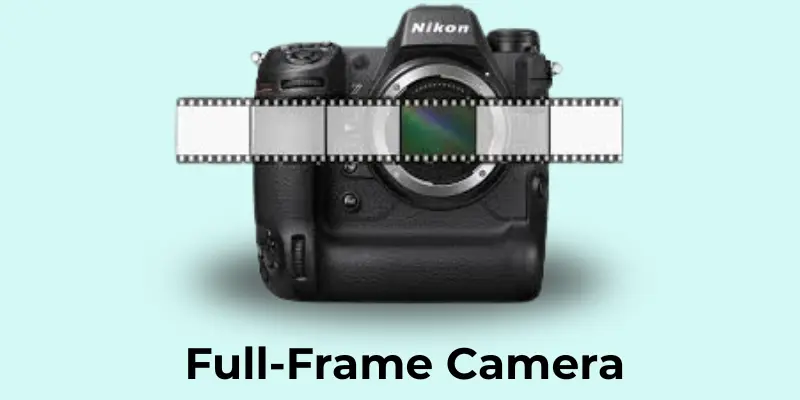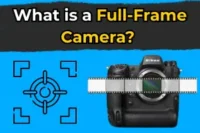What is a Full-Frame Camera? Expert Photography Guide
Published: 11 Nov 2025
Have you ever wondered why so many professional photographers highly prefer full-frame cameras? It’s not just a marketing term—full-frame cameras offer amazing image quality, especially for those looking to elevate their photography skills. But what exactly does “full-frame” mean, and why should you care?
In this guide, we’ll dive into everything you need to know about full-frame cameras, from what they are and how they work to their benefits and drawbacks. Whether you’re a beginner or a seasoned pro, by the end, you’ll have a clear understanding of why full-frame cameras are worth considering for your next upgrade.
What is a Full-Frame Camera?
A full-frame camera is a type of digital camera that features a sensor with dimensions of 36mm x 24mm, which is the same size as traditional 35mm film. This larger sensor can capture more light and more details compared to smaller sensors like APS–C or Micro Four Thirds. Because of this, full-frame cameras produce sharper images, better low-light performance, and a wider field of view.

Full-frame cameras are widely used by professional photographers and videographers who want high-quality photos and videos. They are great for landscape photography, portrait photography, and cinematic video recording.
How Does a Full-Frame Camera Work?
A full-frame camera works by using its large sensor to capture light coming through the camera lens. The sensor converts the light into electrical signals, which are then processed by the camera to create an image.
Because the sensor is larger:
- Each pixel can capture more light, giving brighter and clearer images.
- It produces a better depth of field, making the background look more blurred in portraits (beautiful bokeh effect).
- The camera can perform well in low-light conditions without much noise.
In short, the bigger the sensor, the better the image quality, especially for professional-level photography and videography.
Advantages of Full-Frame Cameras
Full-frame cameras are an excellent choice for photographers looking for higher image quality and more creative control. Here are the key advantages:
- Sharper Images: Full-frame sensors capture more light and detail, resulting in clearer photos even in challenging conditions.
- Better Low-Light Performance: With less noise at higher ISO levels, full-frame cameras perform excellently in low-light settings.
- Enhanced Depth of Field: The larger sensor creates beautiful background blur (bokeh), perfect for professional-quality portraits.
- Wider Field of View: Full-frame cameras provide a broader perspective, ideal for landscapes and wide-angle shots.
- Greater Dynamic Range: Full-frame sensors capture more detail in both shadows and highlights, producing balanced, vibrant images.
Disadvantages of Full-Frame Cameras
Of course, like anything, full-frame cameras aren’t perfect. Here are a few things to keep in mind:
- Higher Cost: Full-frame cameras are significantly more expensive than crop sensor models, both in terms of the camera body and the lenses required to take full advantage of the larger sensor.
- Larger Size and Weight: Full-frame cameras are usually larger and heavier than crop sensors, which might be a drawback if you’re looking for a lightweight, portable setup for travel or street photography.
- Increased File Size: The larger sensor produces higher-resolution images, which means the files are larger. This requires more storage space and faster memory cards, adding to the overall cost and equipment requirements.
- Lens Compatibility: Full-frame cameras require lenses designed specifically for them. While crop sensor lenses can sometimes be used on full-frame cameras, they often result in a reduced field of view.
- Learning Curve: Due to their advanced features and settings, full-frame cameras may be harder to learn for beginners. Getting the most out of a full-frame camera requires understanding manual settings, lens options, and advanced photography techniques.
How to Choose the Right Full-Frame Camera
Choosing the right full-frame camera depends on your photography needs, budget, and experience level. Since these cameras are a big investment, it’s important to know what features matter most to you. Here are a few simple tips to help you decide:
1. Know Your Purpose
Ask yourself what kind of photography you enjoy most.
- If you love portraits or weddings, choose a camera with strong low-light performance and great depth of field control.
- For landscape photography, look for a wide dynamic range and a weather-sealed build.
- If you make videos or vlogs, focus on models that offer 4K or 6K video, image stabilization, and good autofocus.
2. Consider the Sensor and Resolution
Full-frame cameras already have large sensors, but resolution still varies. A 24MP camera is perfect for most users—it offers sharp images and manageable file sizes. If you plan to crop or print large photos, go for higher megapixels like 40MP or more.
3. Check Lens Compatibility
The quality of your photos depends not only on the camera but also on the lens you use. Make sure the brand you choose offers a wide range of compatible lenses. If you already own some lenses, check if they work with your new full-frame body or if an adapter is required.
4. Balance Features and Budget
Don’t spend all your money on the camera body alone. You’ll also need lenses, memory cards, and extra batteries. Compare features like autofocus speed, burst mode, stabilization, and touchscreen options before finalizing.
5. Try Before You Buy
If possible, visit a store and hold the camera in your hands. Check if the grip feels comfortable and if the controls are easy to use. A camera that feels right in your hand will make shooting more enjoyable.
6. Think About Future Growth
Choose a camera that can grow with your skills. It’s better to invest in a model that has room for you to explore more features as you learn.
Conclusion
Full-frame cameras offer excellent image quality, great low-light performance, and creative flexibility, making them ideal for photographers who value detail and depth. Though they’re more expensive and heavier, the results often justify the investment.
Whether you’re upgrading from a crop sensor camera or diving into professional photography, a full-frame camera can truly elevate your work. By understanding their strengths, limitations, and how to choose the right one, you’ll be ready to make a confident decision and capture photos that truly impress.
Frequently Asked Questions (FAQs)
Here are answers to some of the most common questions about a full-frame camera :
Full-frame cameras have larger sensors (36mm x 24mm) than crop sensor cameras. This allows them to capture more light, giving better image quality, low-light performance, and depth of field control. Crop sensors are smaller, which can limit the field of view and image detail.
Full-frame cameras are great for high-quality photos, but they can be expensive and heavier. Beginners might start with a crop sensor camera and upgrade later. If you’re serious about photography and willing to learn, a full-frame can be a good long-term investment.
Yes, you can use full-frame lenses on crop sensor cameras, but the field of view will be narrower due to the crop factor. They will work, but the image may look zoomed in compared to a full-frame body.
It can take time because full-frame cameras have advanced manual controls. But you don’t need to master everything at once. Start with automatic or semi-automatic modes and gradually explore manual settings.
It depends on your budget and goals. If you’re serious and want long-term investment, starting with full-frame is fine. But beginners can also start with a crop sensor and upgrade later as their skills grow.

- Be Respectful
- Stay Relevant
- Stay Positive
- True Feedback
- Encourage Discussion
- Avoid Spamming
- No Fake News
- Don't Copy-Paste
- No Personal Attacks

- Be Respectful
- Stay Relevant
- Stay Positive
- True Feedback
- Encourage Discussion
- Avoid Spamming
- No Fake News
- Don't Copy-Paste
- No Personal Attacks





